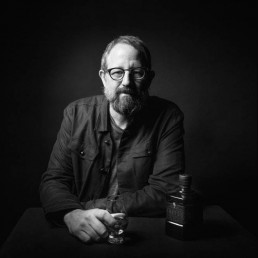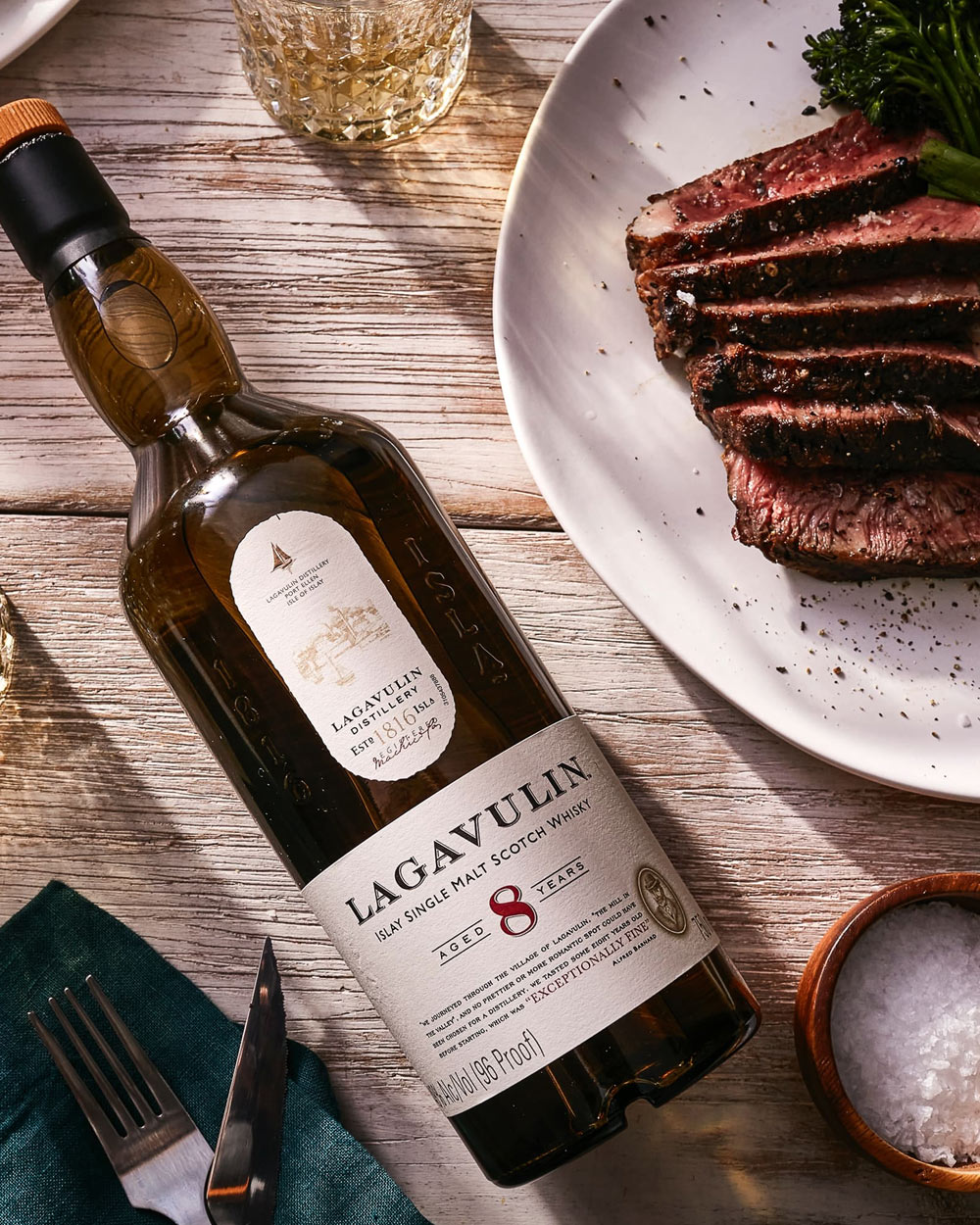Canadian is a strange bird in the whiskey universe.
Despite the fact Canada’s Crown Royal is the second highest selling whiskey in the United States (Jack Daniels is number one) and the category sells 24 million cases in the States, Canadian whiskey remains among the most misunderstood categories. Truth be told, the breadth of what comprises the Canadian whiskey category can be mind boggling. But once you grasp how and why things are done up north, you unlock a world of beautiful products at amazing values ranging from austere sippers to bold, robust cocktail darlings, and everything in between.
While Canada is the second largest country in the world (Russia is #1), its population is only 37 million, slightly less than California. For this reason, the industry leans heavily on its export market. Canadians have become masters of creating different whiskey styles and flavors for different consumers around the world. In the States, American bourbon is made with a recipe, or mash-bill, of grains cooked together prior to fermentation, distillation, and maturation. Most Canadian whiskey is comprised of blends made from individually distilled and casked grains, such as rye, corn, wheat, and malt. These single-grain whiskies are then married together to achieve a desired flavor profile. At least that’s the baseline, but not necessarily the rule. Crown Royal De Luxe, the highest selling Canadian, does in fact work with mash-bills and contains a good dose of bourbon-style whiskey in its blend, a recipe of 2/3 corn, 1/3 rye, and a pinch of malted barley.
“The American palate for Canadian whiskey is a bit different from the Canadian’s palate,” says Davin de Kergommeaux, author of Canadian Whisky, the New Portable Expert. “In the US, there are many brands not for sale in Canada, such as Black Velvet, the number two selling Canadian whiskey in the world. At the Canadian Whiskey Awards we have separate categories for whiskeys released in America and those sold only in Canada. It’s a completely different profile.”
De Kergommeaux explains that as a generalization Canadians prefer crisper and more nuanced and complex whisky, while American drinkers gravitate towards bolder, sweeter, in-your-face flavors found in bourbon, or spicy “high-ryes.” The flavor touchstones of classic Canadian is broken into three waves: caramel and butterscotch on the front palate, followed by peppery spice, and a slightly bitter finish, like the pith of a grapefruit. This helps cleanse the palate and ready you for your next sip.
Thirsty yet? Good.
Once you begin know your way around Canadian brands, you figure out the incredible range of flavors and styles readily available, usually at a fair price. Here are some amazing examples ranging from entry-level cocktailer to best-in-class sippers.
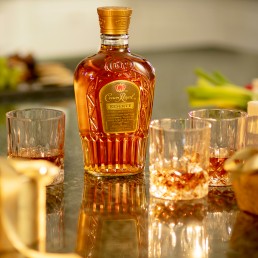
Crown Royal Special Reserve
Vitals: Proof: 80 (40% ABV); $46
Think of CR Reserve as an elevated version of Deluxe, the flagship whisky in the ubiquitous purple velvet bag. To make it, the blenders begin with five individual whiskies, a combination of single grains and mash bills. Two corn distillates sets the foundation, rich in bright fruit and butterscotch. This “broth” is spiked by a floral, bourbon-style whisky and a spicy 95% rye, adding layers of baking spice like nutmeg and a hint of clove. But Crown’s secret weapon is an old-school “Coffey still” made rye, imparting rich chocolate and banana notes. Crown’s blenders use a variety of virgin, first fill and more seasoned oak barrels for aging. To make Crown Reserve, the blenders choose only the finest barrels from these stocks, only 1-2% of the inventory is selected for this upgraded bottling. The result is a creamy, viscous whisky steeped in Crown’s signature rye influence.
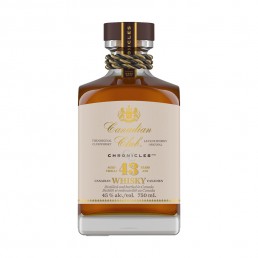
Canadian Club Chronicles-43 Year Old-The Speakeasy
Vitals: Proof: 90 (45% ABV); $329
Canadian Club’s Chronicles Series is serious whisky history in a bottle. Released on the heels of 2019’s 42-year-old, each annual bottling of this storied liquid becomes the new oldest Canadian ever released. Unlike most Canadian whiskies in the US, here is a classic “Canadian” sipper rooted in nuance, complexity, and elegance. The story dates back to 1967 when the master blender filled 250,000 barrels with rye for aging. The whisky was 10-years old when the company dumped the dripping rye barrels and filled them with corn distillate, then set them aside for four decades. The first of the Chronicles Series was released at 41years old, and CC plans to release liquid from this same batch of barrels each year until the juice is aged 45 years. The remainder will be reserved for a special 50-year-old bottling. How does a 43-year old Canadian whisky taste? As extraordinary as it sounds. Robust rye spice, caramel, and oak on the nose converts to warm brown sugar notes mingled with baking spices and an expected punch of oak. The finish is long and concludes tart, like a classic Canadian sipper should.
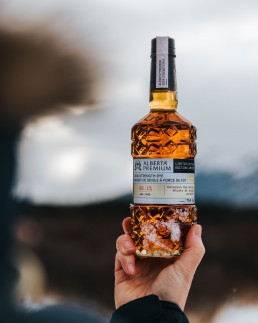
Alberta Premium Cask Strength
Vitals: Proof 127.8 (63.9%) – 132 (66.%); $100
Who thought 130 proof whisky could go down that smooth? Alberta Premium has been quietly serving delicious 100% rye to their fellow countrymen while the distillery reserved the bulk of stocks for sale to blenders and bottlers selling whisky all over the world. But American fans of this well respected distillery were psyched to finally see a flagship bottling come to the United States, and this cask strength expression does not disappoint. Alberta prides themselves on superior rye flavor, which the company attributes to the local farmers who have been custom-growing open pollinated “prairie” rye for three generations. According to the distillery this pollinated rye is a more flavorful grain than usual hybrid varieties which are primarily grown for baking bread, not distilling whiskey. This high test monster delivers a clean, oaky nose and vanilla sweetness which carries onto the palate and joins with chocolate, spice, and dried fruit. A few drops of water loosens this whiskey up, but I sip it first in all of its cask strength glory.
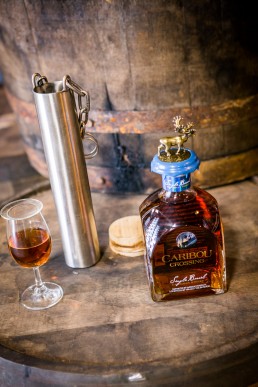
Caribou Crossing Single Barrel
Vitals: Proof: 80 (40% ABV); $50
Launched in 2006 Caribou Crossing has the distinction of being the one of the first Canadian single barrels. Made with a combo of corn, rye, wheat, and malt barley, each barrel of Caribou Crossing is hand selected by world renowned Master Blender Drew Mayville at the Old Montreal Distillery in Montreal, Quebec. The result is a silky and approachable Canadian that strikes the balance of mild yet complex. Look for clean and balanced spice, vanilla and fruit on the palate, which finishes fairly long and spicy.
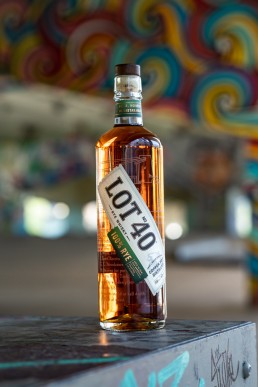
Lot 40 Rye Canadian Whisky
Vitals: Proof: 86 (43% ABV); $39
Lot 40 has been a whisky ahead of its time, until now. This 100% rye was first introduced in the late 90’s, a time when nobody was drinking rye. The product sold poorly and was eventually discontinued. When cocktail culture began heating up in the early naughts, rye became popular again. Parent company, Corby, reactivated the brand in 2012. This time, bartenders in hot markets like New York and London went nuts for Lot 40’s versatility and spicy character, and upon release, the whisky bagged Canadian Whiskey Of The Year two years straight. This 100% un-malted rye recipe is first column distilled, then finished in an 8,000 liter pot before laying down in charred virgin oak barrels. The result is expected rye grain goodness like baking bread, citrus, spices, and big floral notes, enveloped in vanilla, toffee, and caramel from the wood.
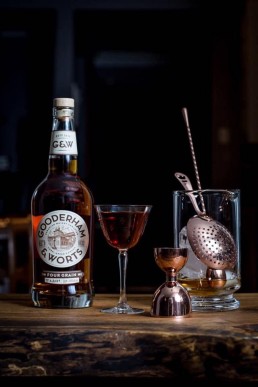
Gooderham & Worts
Proof 88.8 (44.4 ABV); $50
The history of this beautiful sipper dates back to 1832, the earliest days of Canadian whisky history in the York, presently downtown Toronto. The brand has been a cult classic for years in Canada before being released in the United States in 2019. G&W is a four-grain whisky comprised of almost equal parts column distilled corn and single pot distilled rye, rounded out with barley and wheat, and aged in a combination of ex-bourbon and virgin American oak. While the bottle is non-age stated, the dominant corn and rye grains are aged 10-years while the youthful supporting cast of grains is much younger juice. The result is bold and complex yet balanced, loaded with aromas of baked bread and flavors steeped in toasted nuts, spice, and green apple, capped with sweet caramel, toffee, and oak.
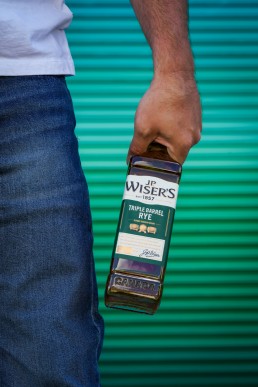
JP Wiser's Triple Barrel Rye
Vitals: Proof: 90 (45% ABV); $20
JP Wiser’s Triple Barrel Rye is a perfect example of a Canadian whisky designed with the American palate in mind. Designed by master blender Don Livermore, this blend consists of 60% column distilled rye, imparting spice notes, baking spices, and rye bread flavors. The next component is 37% double column-distilled corn, capped with a pinch of column and pot stilled wheat, imparting a soft and creamy nuance. The whisky is, as the name implies, aged in three types of casks. First fill (meaning once used) bourbon barrels add a signature dried fruit element, combined with “Canadian whisky casks,” meaning ex-bourbon barrels that have been used a couple of times. This brings out the character of the grain and yeast. Charred, virgin oak barrels are employed to put that American stamp on the whiskey, which is bottled at 45% ABV like a standard bourbon. This adds layers of that warm vanilla and sweet caramel flavor bourbon drinkers covet, mingled with dried fruit and toasted grains, which are definitely Canadian.
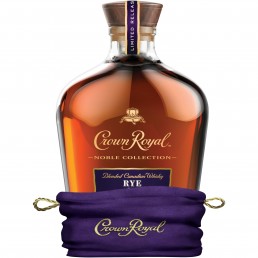
Crown Royal Noble Series, 16YR Rye
90 Proof (45% ABV); $70
This Crown Royal 16-year-old is the fifth expression in the Noble series collection, which has been released annually since 2016. The original Cornerstone was a combination of Crown’s signature “flavoring” whiskies, including bourbon style, rye and Coffey rye. This was released to showcase the “Cornerstone” of Crown’s signature blend. 2017’s Noble release was a wine barrel finished whisky, followed with a 13-year age stated “blenders mash.” This is a well-aged bottling of their bourbon-style whisky. Next up was whisky finished in French Oak, which leads up to the latest, 16-year rye. Here is a 90% “high rye” recipe, juice usually reserved for spicing up the Crown Royal flagships blend, aged at least sixteen years. You can’t miss the big, grain driven flavors of baking spices, nutmeg, and cloves, exactly what you’d expect in a beautiful Canadian rye, only amplified, the way us Americans like it.
John McCarthy is a spirit, travel, and lifestyle journalist, managing editor, and author of The Modern Gentleman.
